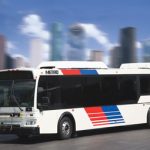Death traps, anarchy and opportunity
A fatal accident, or a new public transport people-carrier with a five-year service plan, trained driver and tyre-replacement schedule? They have the same price tag, give or take. These are our choices. It’s a matter of reactive or proactive spending, and life or death.
In a two-week period last year, more than 25 people died in three separate bus crashes – many of them children. All their bus fares were subsidised by government from our taxes.
Is it enough to hand over a pile of cash simply because the tender documents were in order without checking the drivers’ credentials and the condition of the buses once a quarter?
That may be what traffic cops are there for, but there aren’t enough suitably trained officers out there, and far too many are susceptible to an easy buck.
All this makes for badly maintained public transport subsidised by the citizenry, condoned by government and presented to school children and commuters, often as their only option. Accidents will happen. Collateral damage. The Road Accident Fund (RAF) will look after the injured.
The 2010 Road Traffic Management Corporation (RTMC) annual crash and offence monitoring report shows that, for the past few years, traffic safety practitioners put the cost of crashes to the economy at between R46 billion and R56 billion. But wait, it gets scarier.
There’s a formula to establish the “unit cost” of a fatal accident in South Africa. It takes into account such things as life expectancy, loss of earnings and RAF payouts, as well as medical, hospitalisation, incident-management, emergency-services and vehicle costs.
Care to guess the “unit cost” of a single fatal accident? Brace yourselves. The latest estimate puts it at R1,23 million. In 2009, that figure equates to a cost of at least R133 billion, more than twice the estimates mentioned in previous years. And the figure is likely to double when non-fatal injuries and bumper-bashings are added. Imagine what we as a nation could do with an extra R250 billion every year.
What will happen when citizens start demanding safer vehicles, roads and drivers? The Decade of Action for Road Safety was launched last May, and still not a peep or hint of action from the Department of Transport or the RTMC
There’s only so much blustering from leaders and politicians a country’s people will take. Standing together and saying “No more” is having increasingly powerful results worldwide. The e-tolling saga was relatively bloodless (Nazir Alli might disagree), but just think of the anarchy associated with the Arab Spring.
Let’s imagine what would happen if we decided to take a stance. How would we do this? I don’t have the answers, but we all need to start thinking creatively.
There must surely be a way to take that R1,23 million “unit cost” of each fatal accident and redirect it. We’ve obviously got the money. The economic stomach punch of the three bus accidents mentioned earlier could probably have bought a bus and a smaller people carrier or two or three, complete with service plans and driver training.
By my calculation, redirecting half of the total fatal-accident cost borne by the country in 2009 to the purchase of new vehicles would mean a boost for the automotive and transport sector of around R66,5 billion a year. Could be that FOCUS readers and advertisers are the nation’s best bet in terms of this particular challenge.
SKID MARKS is a regular column in which Gary Ronald presents his personal and sometimes jaundiced view on transport, safety and mobility. Ronald has a wealth of experience in these fields has presented numerous papers both locally and internationally. He’s been with the AA since 2000 and is currently its head of public affairs. All comments published here reflect his own opinion, and not that of the AA. FOCUS appreciates his witty, topical and sometimes irreverent stance on the industry. If you’d like to respond to whatever punches he throws, visit www.focusontransport.co.za.
Published by
Focus on Transport
focusmagsa


 !
Starting 1 April, every
!
Starting 1 April, every


 FUSO: Driving the Future of Mobile Healthc
FUSO: Driving the Future of Mobile Healthc



 A brand
A brand




 Wondering about the maximum legal load for a
Wondering about the maximum legal load for a 
 The MAN hTGX powered by a hydrogen combus
The MAN hTGX powered by a hydrogen combus


 Exciting News for South African Operators
Exciting News for South African Operators





